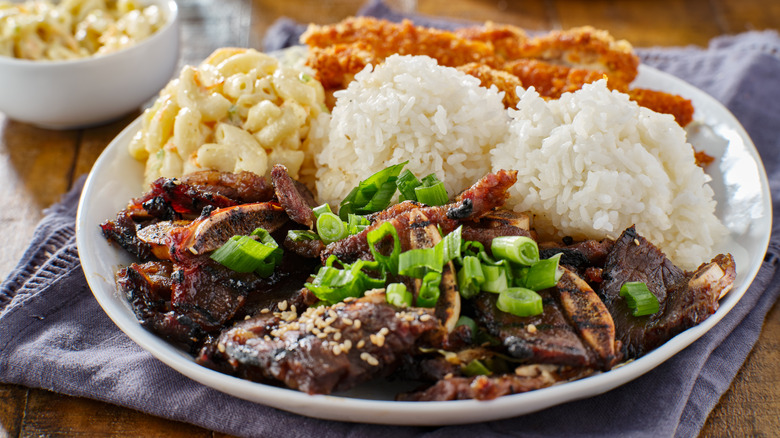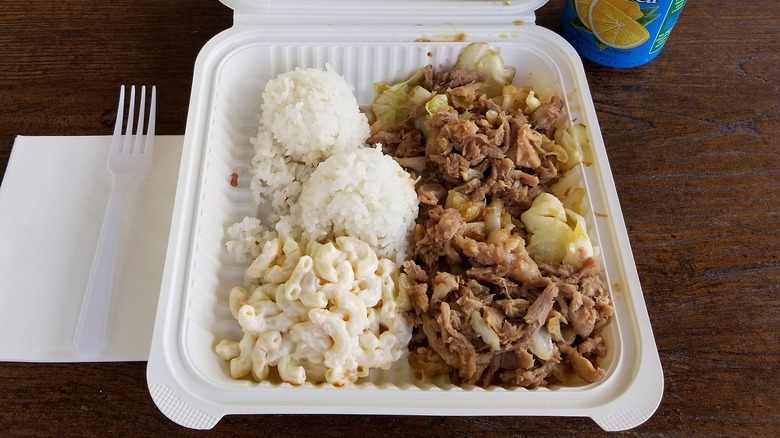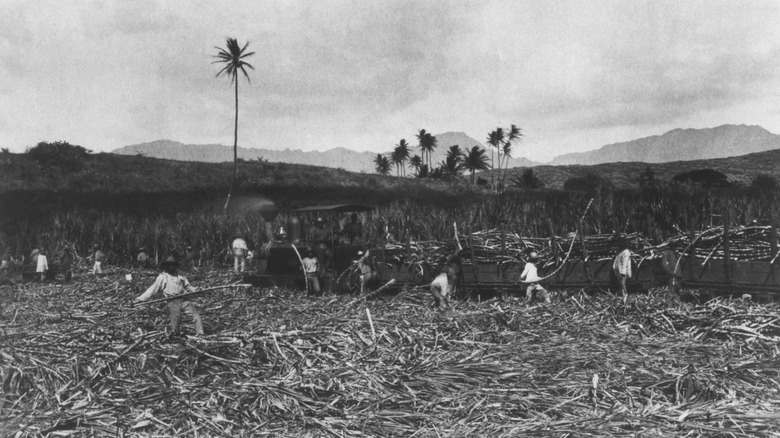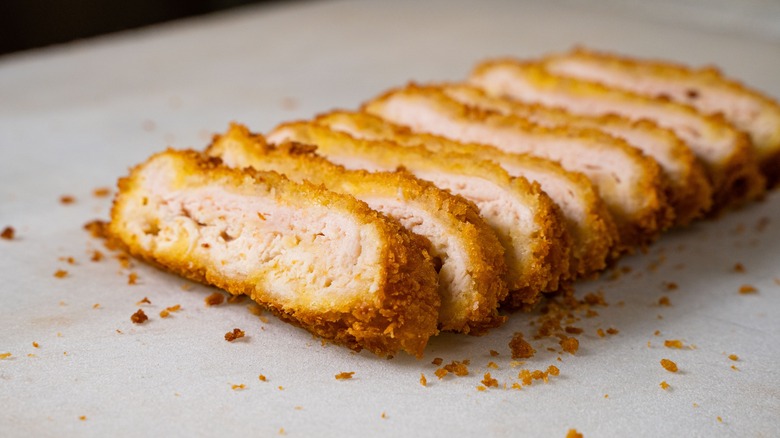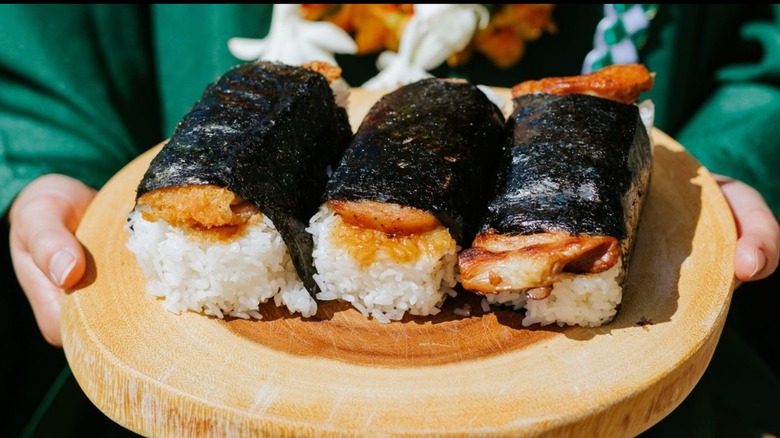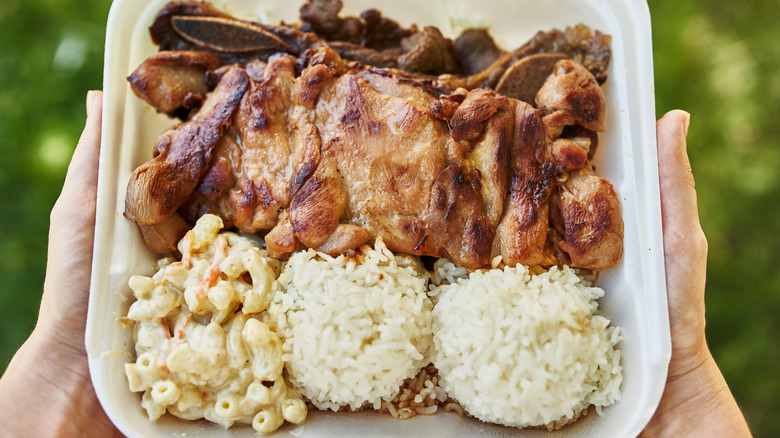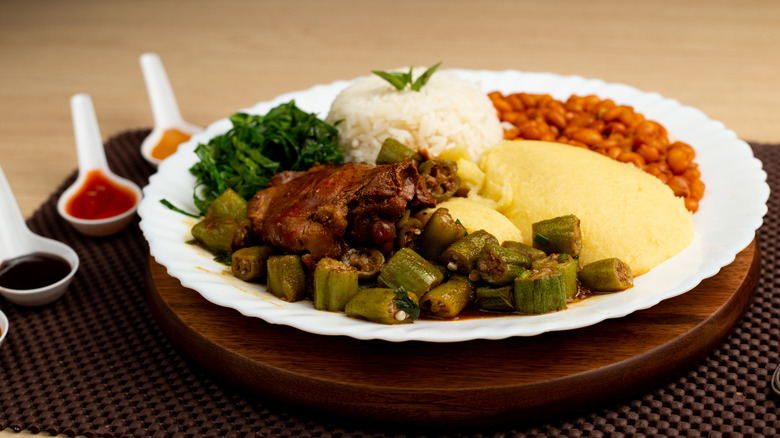What Is Hawaiian Barbecue And What Makes It Unique?
When most people think of Hawaii, sandy beaches, picturesque sunsets, and crystal clear waters come to mind. While the state is a tropical paradise, when I travel there, what captivates me is the food. As a chef, I have spent many hours exploring the diverse and eclectic culinary landscape that is the archipelago of Hawaii. One such food that has become popular outside of the state, and is experiencing something of a renaissance, is Hawaiian barbecue.
Like other foods in the state, Hawaiian barbecue, or plate lunch, as it is more commonly known (more on that later), is representative of the unique history of the islands and the diverse population that has migrated there. Expats from nations like Japan, China, the Philippines, Korea, Portugal, and more, all settled there, bringing with them a plethora of ingredients and recipes representative of their motherlands. Many of these have become the focal point of the iconic Hawaiian barbecue.
To learn more about what Hawaiian barbecue is and what makes "the state food of Hawaii" so unique, I had the opportunity to pick the brains of Elisia Flores, chief executive officer of L&L Hawaiian Barbecue, the restaurant chain responsible for bringing this culinary tradition across the Pacific to the mainland and beyond. Flores enlightened me as to the ways in which the plate lunch has succeeded in spreading aloha and has evolved from humble beginnings to becoming the worldwide phenomenon that it is today.
What is Hawaiian barbecue?
At its most basic, Hawaiian barbecue, or plate lunch, is a simple, portable meal, often purchased to-go from roadside stands, drive-ins, and casual eateries across the state. The meal is typically served in a characteristic compartmentalized foam container with disposable chopsticks. According to Flores, "the plate lunch that we know today consists of various types of protein (chicken, beef, shrimp, and tofu) flanked by a scoop of creamy macaroni salad and two scoops of white rice."
Though the proteins vary by location and have expanded to include options for those seeking healthier and even vegan options, there are several core staples that appear on virtually any plate lunch menu. These include barbecue or teriyaki-style meat, fried fish or seafood, Loco Moco, a hamburger creation topped with brown gravy and fried eggs, chicken katsu, kalua pork with cabbage, and even SPAM musubi.
Aficionados include casual beachgoers and celebrity Hawaiians alike (here's looking at you, former President Barack Obama). Its simplicity, consistency, and convenience make it the ideal meal to enjoy while taking in some sun on one of Hawaii's many magical seashores. These characteristics have helped to propel the plate lunch into the awareness of fans globally, providing something unusual, flavorful, and nostalgic to those seeking an alternative to other fast food options.
Where did Hawaiian barbecue originate?
As Flores from L&L Hawaiian Barbecue puts it: "Hawaiian barbecue is truly a celebration of many cultures fused by the various ethnicities...that make up the colorful community of Hawaii, which is reflective of its Hawaii agricultural-era roots." These humble roots date back to the 19th century when immigrant workers, predominantly from Asian countries, labored under the harsh Hawaiian sun on sugar and pineapple plantations. This kind of energy-zapping work required a hearty, carbohydrate- and protein-loaded lunch to refuel weary bodies.
These nourishing lunches were transported to the fields in bento box-like tins filled with what are now the core staples of Hawaiian barbecue, namely the rice and a leftover protein indicative of the cultural heritage of the migrant worker. As time went on, food carts began frequenting the fields, selling plates of food with similar ingredients on them that were cheap and easy for the workers to quickly consume. It was around this time that the mayonnaise-laden macaroni salad made its debut.
Its expansion out of the fields is believed to be attributable to Moyo Iwamoto, a woman of Japanese lineage who began selling food off of a cart along the Honolulu waterfront in the late 1920s after her husband perished from the Spanish flu. She later created a dockside stand where she would load an 8-inch paper plate with rice, macaroni salad, protein, and condiments, the likely origin of the "plate lunch" moniker.
What are some highlights of Hawaiian barbecue?
When considering highlights of Hawaiian barbecue, I'd be remiss in not mentioning the macaroni salad. What sets this staple aside from other variations on macaroni salad is the pasta and the mayonnaise. No Hawaiian chef worth their salt would use anything but Hellmann's mayonnaise in their macaroni salad. And, where the pasta is concerned, it must be cooked to a perfect al dente texture, otherwise the copious quantities of mayonnaise added will render the salad a soggy mess.
Where proteins are concerned, chicken katsu is king. This breaded and fried Japanese specialty, reminiscent of a German wienerschnitzel, seems simple to prepare, but there are plenty of mistakes you can make in the process that can render the meat dry and the crust soggy. One key to the perfect chicken katsu is to coat the meat in flour before dunking it in an egg wash and covering it with panko bread crumbs. This ensures the breading will adhere to the meat as it is fried. Another important factor in obtaining the perfectly crisp crust is to double fry the meat after it has been breaded.
Lastly, if you are searching for a modern twist on the plate lunch, you won't want to skip the SPAM musubi, a sushi-style twist on the classic canned meat. Rice is topped with the meat, then wrapped in a sheet of nori. Few foods are as iconic in Hawaii as SPAM, so its introduction into the plate lunch phenomenon is a natural fit.
How did Hawaiian barbecue become popular?
The appeal of plate lunches beyond the plantation may have started with that first pop up food cart helmed by Moyo Iwamoto in the 1920s. However, proliferated exponentially throughout the mid-20th century, as diners and drive-thrus began emerging across Hawaii. One such eatery was L&L Drive-Inn, which began selling bottled milk before expanding its menu offerings to include plate lunches.
In 1976, this establishment was purchased by Eddie Flores, Jr., who, in partnership with Johnson Kam, created the L&L brand, coining the term "Hawaiian barbecue," and expanded it across the state. The brand eventually moved to the mainland in 1999, opening its first franchise in Puente Hills, California, before spreading across the U.S. and abroad to Japan. Though they were hardly the first, or last, to serve plate lunches, the L&L brand is certainly integral to its widespread appeal beyond the shores of the Hawaiian archipelago.
As to why consumers are so fanatical about Hawaiian barbecue, Flores credits the big plates and bold flavors. In a world where foodies are increasingly searching for innovative trends, some things never change. Value, comfort, and nostalgia never go out of favor. That said, adapting to evolving consumer desires is necessary, and L&L has been at the forefront of this evolution by "offering smaller or "mini" plates, as well as plates with healthier options...replacing the white rice and macaroni salad, with brown rice and green salad."
Where can I eat Hawaiian barbecue?
If you are planning a trip to Hawaii, you should absolutely seek out a rustic food cart or local eatery and indulge in a plate lunch while enjoying the sun and a fruity beverage, like a tropical frozen piña colada cocktail. This is the best way to appreciate the combination of flavors and nostalgia of a meal that has long fueled the bodies and souls of islanders.
That said, if a trip to the state is not in the forecast, there are plenty of other ways you can appreciate Hawaiian barbecue. Residents of California, Nevada, Texas, and Japan can stop by one of L&L Hawaiian Barbecue's many locations to appreciate the sense of 'ohana, or family, that gathering around a table and eating good food can provide. Others can experience a plate lunch at Hawaiian-themed restaurants and eateries across the country.
If you do not live near any of these, whip up a plate lunch on your own. There are plenty of delightful recipes for macaroni salad, and classic kalua pork, chicken katsu, Loco Moco, or SPAM musubi are easy to whip up from the comfort of your own kitchen. And, whatever you do, do not forget the rice. Some basic hacks will help you produce the perfect fluffy rice every time you cook it.
What is the difference between Hawaiian barbecue and a Southern plate lunch?
If you are from the Southern U.S., or have ever traveled there, the term plate lunch may sound familiar. Indeed, plate lunches, or meat 'n' threes, are a staple of the Southern diet. These casual meals, featuring homestyle cooking at an affordable price, are available across the region from eateries of all kinds. What some Southerners may not know is that the plate lunches of the South owe their existence to their Hawaiian cousins. The concept is the same, but the packaging is decidedly unique.
Like the Hawaiian plate lunch, these meals evolved out of necessity, feeding working class people a hearty meal to keep them going. And, like the Hawaiian iteration, the foods served on Southern plate lunches represent the diversity, multiculturalism, and tumultuous history of those who have inhabited the region, having indigenous, European, and West African influences.
Most Southern plate lunches include one portion of meat and two (or more) vegetables doused in plenty of gravy. The meat can range from fried chicken or meatloaf to pot roast or fried catfish. Vegetables may be a bit of a misnomer, as they may well include carbohydrates of all kinds, from macaroni and cheese to mashed potatoes to sweet potato casserole, though chances are okra of some type will make an appearance. To top off a classic Southern plate lunch, you get a choice of biscuits, rolls, or cornbread to sop up all those delicious, meaty juices.
